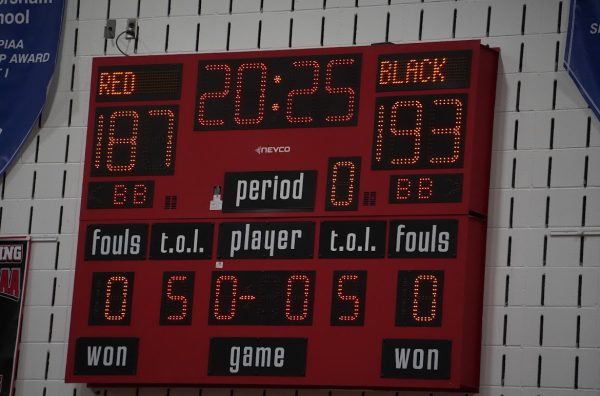Miss Rona Can’t Stop the Robots!
Just as all other activities in our lives, our school’s FIRST Robotics Competition team has also been facing a number of changes in their day-to-day activities. In any other regular situation, the team participates in a competition between hundreds of other robots, leaving team members — as well as their spectators — on the edges of their seats. This year, however, is no regular situation.

Thankfully, the robotics team will still compete, but against each other in intramural teams, since their typical competition against other schools has been canceled due to COVID.
During a regular season, over 35 to 50 students gather every day, including weekends, at the school to make a game plan. They strategize, code, engineer, build prototypes and then finally put it all together to build a functioning robot in two months. Usually, at least 30 teams gather in an indoor arena at a school, where six teams compete at once. The robots then perform the set of tasks they were presented with at the beginning of the year. Based on specific criteria like design, communication, creativity, and engineering skills, teams earn points to then move up levels and into more prestigious competitions.
For these competitions, our school normally has one large team of about 40, but for the sake

of regulation and safety, the leaders this year have decided on an intramural competition. The large team was split into smaller groups of five to six members. The team leaders are juniors Manas Date, Nathanial Matthew, Dallas Hallston, Austin Senich, and sophomores Lance Hartman and Jacob Schwartz. These small teams will be competing in a tournament completely within our school.
The mentors designed this year’s game challenge, “Tumbleweed Takeover.” The objective is to have the robots shoot foam footballs (the tumbleweed) through hoops while climbing staircases (sand dunes) throughout the school.
Senior Conor Costello said, “Personally, I think this season is going to be very fun. An intramural challenge like this is something we’ve never done, so it will be fun competing against former teammates and seeing what designs and ideas they come up with.”
Instead of meeting in person to engineer their robot, robotics members have been meeting and planning everything via Teams. The team members are using an online engineering software called CAD to create a joint product.
Sophomore Sreeprada Alladi said, “Working online with teammates is a very different experience and it is also much harder. When working together, it feels more cohesive and organized, and working online is just more awkward. Still, it gets the job done.”’
When competing in the FRC, teams are usually assigned an alliance with two random teams from those that signed up to participate in that particular competition. Within their alliance they work together to gain as many points as possible and beat other alliances, while also building teamwork skills. This year since the competition will be within our own school, there will be no alliances.
Sreeprada said, “It definitely makes it harder because you have to do more things for yourself. I am nervous, but I am also excited for all the things that can come out of this. We can take this opportunity to see where our own individual strengths and weaknesses lie and also further improve upon our skills.”
Sophomore Zak Ibrahim summed it up perfectly:
“I would be incredibly disappointed if the team was quiet through COVID. The group is more than a team: we spend hundreds of hours making a robot that can compete, each time hoping to achieve greatness. There’s so much hope, lore, pain and perseverance that happens every season. It creates bonds among the members of both the individual teams and robotics community. While the large-scale competitions have been cancelled, the smaller ones keep the bond alive. So, while there’s a part of me that misses the big competitions, I’m so grateful we have this.”








